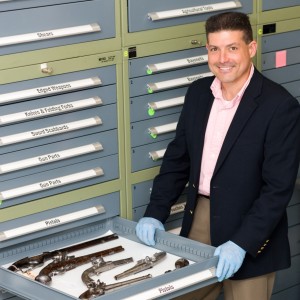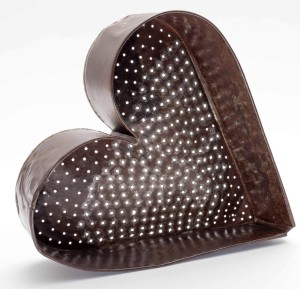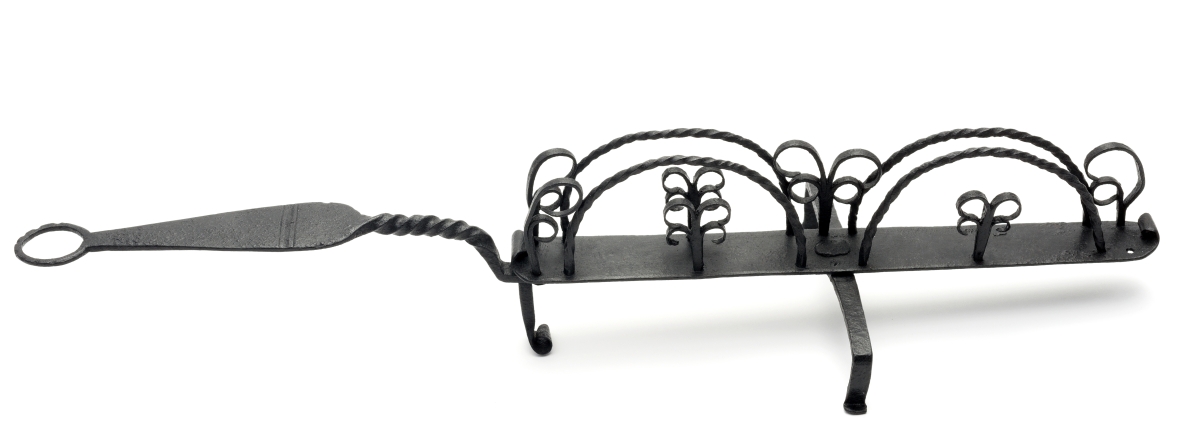
Erik J. Goldstein is the senior curator of mechanical arts and numismatics at the Colonial Williamsburg Foundation and has been in this position since 2002. A student of military history and numismatics, he has lectured widely and instructs a three-year syllabus on Colonial American coins, medals and paper money at the annual American Numismatic Association’s Summer Seminar. He has written more than two dozen articles in both specialties and six books relating to antique weaponry and military history. He recently curated the exhibition, “From Forge and Furnace: A Celebration of Early American Iron,” which opened this week at the Abby Aldrich Rockefeller Folk Art Museum.
What first peaked your interest in history and when?
I was a really odd kid, and started to collect things like coins and rocks before I was 5 years old. Much to my parent’s concern, I even had a bound-up Barbie doll that I used to bury in the garden just so I could dig up a mummy. Was I going to be an archaeologist or a psychopath? While the former option came close, I chose to dedicate my life to really interesting old things. For instance, the idea that you can hold a coin in your hand and know where it was made and when it was made… set my imagination going crazy! Take the Continental Currency paper money bills of the 1770s… these were in everyone’s pockets and were the very things that financed the American Revolution.
You’ll be marking your 15th anniversary at Colonial Williamsburg as curator of mechanical arts and numismatics next year. Tell us about your job and some of the highlights over the years.
I’ve been in the same position for the whole time but in the last few weeks I was named the senior curator of mechanical arts and numismatics. Some of the more interesting projects I have been involved with include the re-creation of Williamsburg’s Public Armoury in April 2012 and the installation of the arms display at the Governor’s Palace, which opened in February 2006. I also made most of the copperware for Charlton’s Coffeehouse, which opened in late 2009.
Coins, antique weaponry and iron… you have quite eclectic interests. Are there any common threads among these besides being made of metal?
I don’t know if there are. People who collect old coins sometimes collect old weapons. The one thing that ties the two together, if you look at the Seventeenth through the Nineteenth Centuries, is that the only things national governments produced were military weapons and coins. Maybe it’s because they were mass produced in their times and they are a researchable and a tangible link to contemporary events, like a Pine Tree shilling is a tangible link to the late Seventeenth Century Massachusetts of Salem “Witch Trials” fame.
Which figure in the Colonial American period most interests you and why?
I’m not a “politician’s” guy, so if I could go back in time and have a beer with anyone from the Revolutionary period, it would be Ben Franklin or “Bloody” Banastre Tarleton, the notorious British cavalry commander. Tarleton was brutally effective in combat, and would be an interesting character to talk to. Franklin was a brilliant wiseguy, and I’m sure he was a real hoot to hang around with.
What was the inspiration to do an exhibit on early American iron and what stories are you telling in this exhibit?
In the old Folk Art Museum here, more than ten years ago we had an extremely popular exhibition called “Heavy Metal,” which featured heavy iron objects like stove plates and firebacks. Taking the idea much further and in different directions, we decided to use plain, old everyday iron as the focus of a fresh perspective on metallic art in America. We started with some really big pieces of “heavy metal” and then thought let’s throw in some delicate tin and some wrought iron, which then became a way to look at the big picture of iron in early America.
We are presenting the iron objects as both art forms and essential items of everyday American life. We trace iron from raw material — the ore — straight through to the finished products. There are certainly some unusual things here, as well as some recognizable things that you could use in your kitchen today, but they are 200 years old. Additionally, there are other pluses that come along with an exhibit like this; because iron is not light sensitive, this exhibit, which is sure to be very popular, can stay up for a long time!
What is the main story you are telling in “From Forge and Furnace?”
The overarching theme is how important iron was to everyday life. Today, iron and steel is everything to our society. Our whole industrial system is built on that. It’s at the root of American success, and it saved our skin, and that of the free world, when we used our industrial might to defeat the Axis powers during World War II. Things made of iron are so commonplace, and have been for so long, that they are generally overlooked and taken for granted. By gathering a wide variety of implements because they are all made from this metal, “From Forge and Furnace” shows how truly beautiful and indispensable iron was to early Americans.
—Andrea Valluzzo






